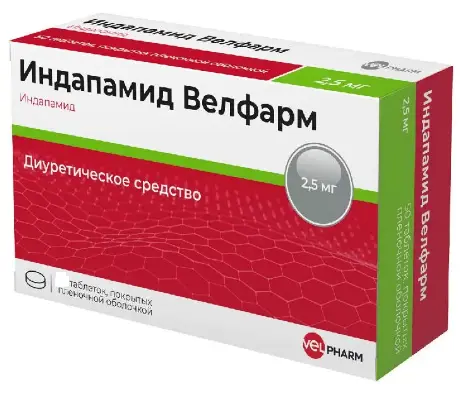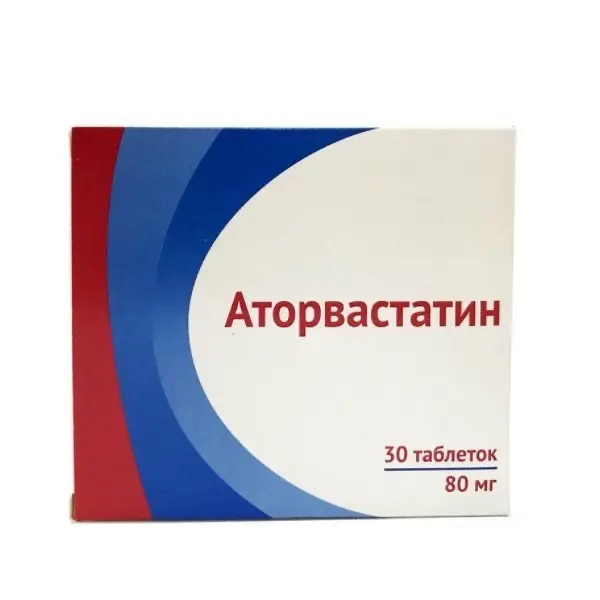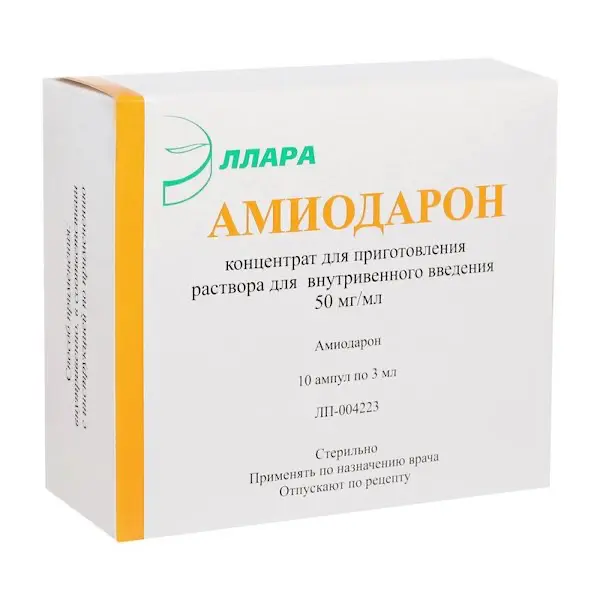Description
Indapamide-Welfarm Pharmacodynamics
Mechanism of action
Indapamide belongs to sulphonamide derivatives with indole ring and by its pharmacological properties is similar to thiazide diuretics, which inhibit sodium ions reabsorption in cortical segment of nephron loop. At the same time, renal excretion of sodium and chlorine ions and, to a lesser extent, potassium and magnesium ions increases, which is accompanied by increased diuresis and hypotensive effect.
Pharmacodynamic effects
In phase II and phase III clinical studies, a 24-hour hypotensive effect was demonstrated when indapamide was used as monotherapy in doses that did not have a pronounced diuretic effect.
The antihypertensive activity of indapamide is associated with improvement of elastic properties of large arteries, reduction of arteriolar and total peripheral vascular resistance.
Indapamide reduces left ventricular hypertrophy.
Thiazide and thiazide-like diuretics, at a certain dose, achieve a plateau
therapeutic effect, while the incidence of side effects continues to increase with further increases in the drug dose. Therefore, the drug dose should not be increased if the therapeutic effect is not achieved at the recommended dose.
In short-, medium-, and long-term studies involving patients with arterial hypertension, it has been shown that indapamide:
– has no effect on lipid metabolism parameters, including triglyceride, cholesterol, low-density lipoprotein, and high-density lipoprotein levels;
– does not affect parameters of carbohydrate metabolism, including in patients with diabetes mellitus.
Indications
Arterial hypertension in adults.
Contraindications
– Hypersensitivity to the active substance, other sulfonamide derivatives or any of the excipients of the drug (see section “Composition per tablet”);
– severe renal insufficiency;
– severe hepatic insufficiency or hepatic encephalopathy;
– hypokalemia.
Due to the fact that the composition includes lactose, the drug is not recommended for patients with lactose intolerance, lactase deficiency, galactosemia, glucose-galactose malabsorption.
Due to lack of clinical data, the drug is not recommended for use in children under 18 years of age.
Dosage and administration
- Tablets are taken orally, without chewing. Daily dose is 1 tablet once a day (in the morning), with plenty of fluid.
- In therapy of patients with arterial hypertension, the drug dose should not exceed 2.5 mg (increased risk of adverse effects without enhancing the antihypertensive effect).
- If the desired therapeutic effect is not achieved after 4 to 8 weeks of treatment, it is not recommended to increase the dose. Instead, it is recommended that a different hypotensive agent, a hypertension drug, be added to the regimen.
- Instead, a different hypotensive drug, not a diuretic, should be included in the drug regimen. In cases where two drugs are required to start treatment, the dose of indapamide remains 2.5 mg once daily in the morning.
- Elderly Patients
- In elderly patients, plasma creatinine concentrations should be monitored taking into account age, body weight and sex.
- The drug in dose 2.5 mg/day (1 tablet) can be administered in elderly patients with normal or slightly impaired renal function.
- Severe renal insufficiency.
- This drug is contraindicated (see section “Contraindications”).





